Health
The year of second wave and vaccination campaign
After initial hiccups, Nepal managed to secure doses, but in 2022, more preparedness is needed amid Omicron threats.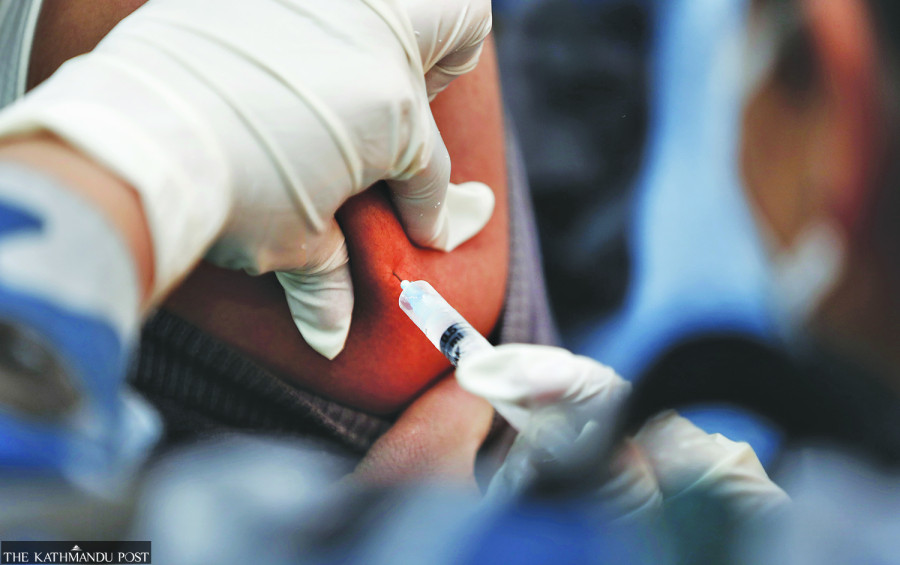
Arjun Poudel
Like any country around the globe, Nepal’s health crisis in the past year was triggered by the coronavirus.
The year started on a good note. Infection rates declined, and Nepal became one of the first countries in the world to launch its vaccination drive on January 27.
But the drive failed to catch momentum, as India put restrictions on vaccine exports due to a surge in domestic cases in March.
The second wave hit Nepal in April. Health facilities throughout the country were overwhelmed with Covid-19 patients.
Infrastructure cracked under pressure—hospitals ran out of beds, oxygen, ventilators.
Over 6,000 people died during the second wave.
Elderly people were deprived of the second dose of vaccine for months. Regular health care services, immunisation and maternity services, among others, were affected.
Nepal’s vaccination campaign resumed after authorities purchased vaccines from China.
Despite the initial hitch in the vaccination campaign, Nepal managed to secure sufficient doses. Authorities are also mulling booster shots once the vaccine coverage rate reaches 40 percent of the total population.
The 40 percent mark is expected to reach within the next two weeks.
Infection rates have slowed down for the past few weeks. But as the country embarks into 2022, Omicron threats loom large over Nepal where the Delta variant wreaked havoc throughout the past year.
The rise in Omicron cases in India has left public health experts worried.
Health experts in Nepal say that even if the outbreak of Omicron happens in the country, it may not be as devastating as the second wave.
Here are some notable incidents:
Start of vaccination drive

Nepal was among the first countries to start a vaccination drive against Covid-19, which started a nationwide campaign with the 1 million doses of Covishield gifted by india.
The first phase of a nation-wide immunisation drive against coronavirus was launched on January 27. Until then, 2,017 deaths were responsible for coronavirus infection and 270,092 people had been infected in the country.
Frontliners—health workers, supporting staffers at health facilities, female community health volunteers, security personnel, sanitation workers, elderly people living in care homes, and prisoners were inoculated. Later, journalists, lawmakers, bureaucrats, people serving in the diplomatic missions were inoculated.
Elderly people had to wait around five months for second doses
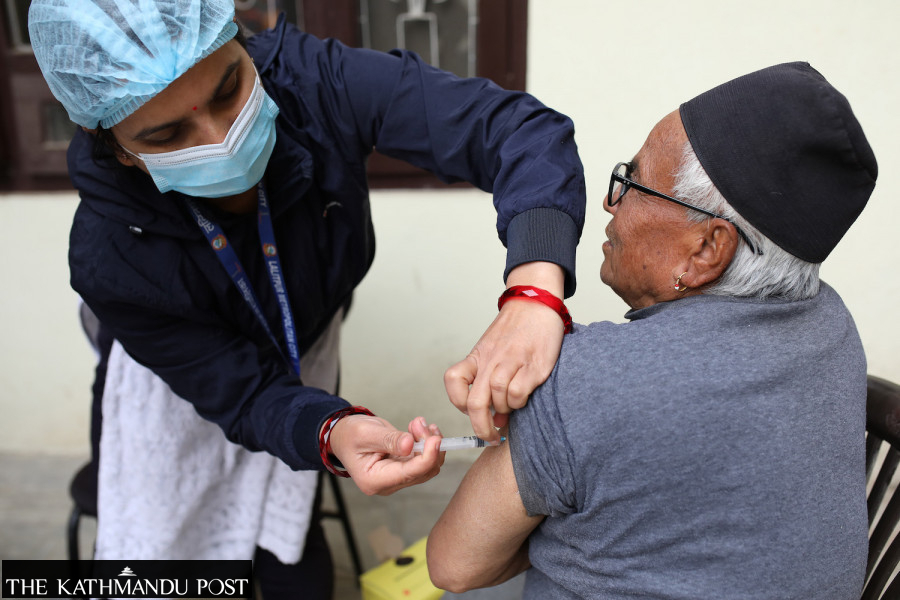
Second phase of the campaign, which was launched from March 7 to 15, was targeted for the people above 65 years old. Though health authorities had planned to administer the jab to all people above 55 years, among whom severity and death rates from the infection were high, they later changed the priority group owing to a lack of vaccine. The vaccination was started with 1 million doses of Covishield purchased from India and 348,000 doses supplied by the COVAX facility, the United Nations backed international vaccine-sharing scheme.
When the second wave of the pandemic hit India in March which is believed to have killed hundreds of thousands and infected millions, India restricted the vaccine export, which affected Nepal’s vaccination drive.
Nepal did not get the supply not only of the vaccine it purchased making advance payment but also the jabs from COVAX. Elderly people had to wait for around five months to get the second dose. When Japan and Bhutan supplied the AstraZeneca vaccine, second doses were administered to the elderly.
Second wave devastated the country
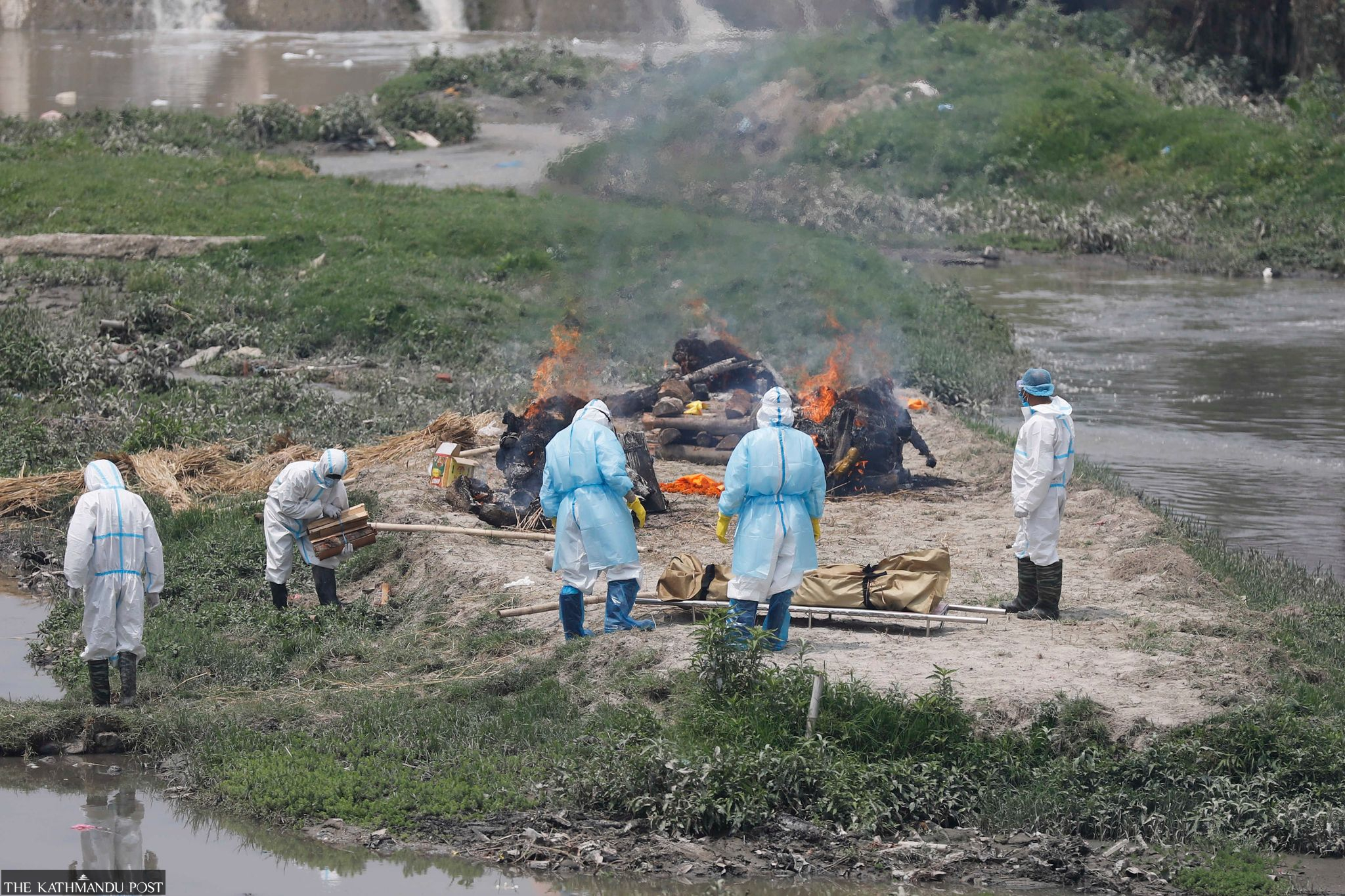
In Nepal, the second wave of the pandemic started in April, around a month after India was hit by the second wave.
The Delta variant of the virus that was first detected in India was responsible for the deadly second wave. A little over 3,000 people had died due to the infection before the second wave of the pandemic hit the country. And as of now the Delta variant is responsible for the infections and deaths. The variant has killed over 8,000 people throughout the country.
Hospitals were overwhelmed, several patients died due to lack of oxygen supply. People were even deprived of the treatment and forced to stay at home, despite complications.
Infections spread in almost every community.
With beds unavailable for new patients, Health Ministry officials even stopped tracing people who were in close contact with the infected.
Complacency, miscalculation responsible for the deadly second wave
Free coronavirus testing was halted months before the second wave hit the country. Despite the growing risks, and warning from public health experts, free testing was not resumed. With the halt in free testing, contact tracing, which was key to containing the pandemic, halted. And when the authorities asked people to go to the hospital only when one faints and faces problems in breathing, hundreds of people are estimated to have died at home.
Quarantine isolation centers, which were somehow set up and managed in the first wave of the pandemic did not run properly and with the infection spreading in communities, contagion reached most of the communities, if not the houses.
General public too stopped following the health measures properly. Experts say fear of the infection declined, which is one of the reasons for the widespread reach of the virus.
Officials wait for months to get vaccines from India
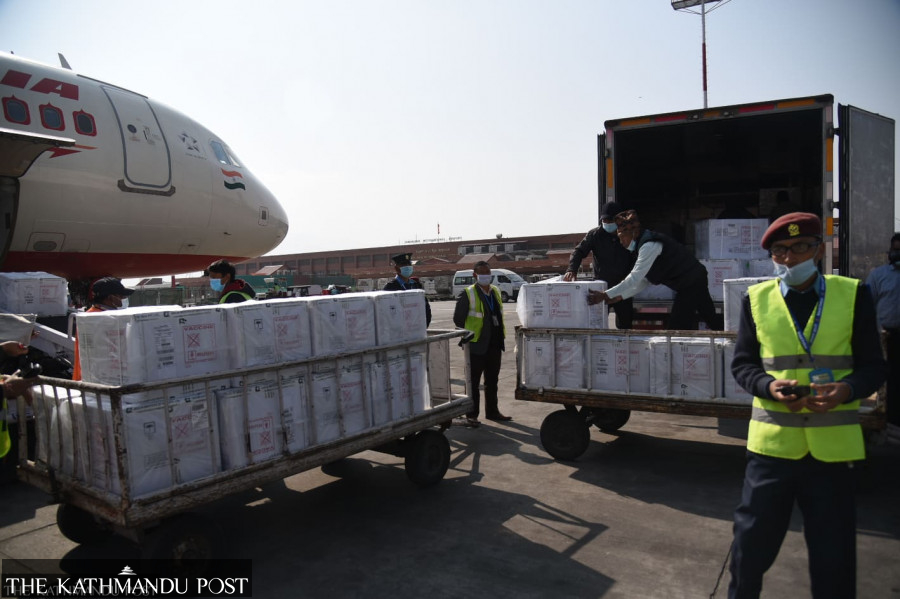
Despite knowing that the southern neighbour is devastated by the pandemic and has restricted export of vaccines, authorities in Nepal kept requesting Indian authorities to resume the supply for months. Experts had suggested explore other sources instead of depending on India.
When the authorities tried to purchase a vaccine from China, it yielded results. China sold 10 million doses of the Vero Cell vaccine through a non-disclosure agreement. The vaccine supplied from China is credited to saving thousands of elderly people.
Vaccine supply resumes
After an initial hitch, Nepal managed to secure sufficient doses of Covid-19 vaccine to inoculate everyone over 18 years old.
Nepal so far has received 39,203,927 doses of various Covid-19 vaccines—Vero Cell, AstraZeneca, Moderna, Janssen and Pfizer.
Of the total amount received, COVAX, the United Nations-backed vaccine sharing scheme, has supplied 16,989,720 doses. Of them, 6,387,000 doses were Covishield and 2,474,840 doses AstraZeneca.
Likewise, the facility also supplied 3,711,500 doses of the single-shot Janssen, 3,651,200 doses of Moderna and 765,180 doses of Pfizer-BioNTech.
Nepal has also received 18,551,487 doses of the Chinese Vero Cell vaccine. Of them, the government purchased 10 million doses through a non-disclosure agreement from the vaccine manufacturer Sinopharm. An additional 4,751,487 Vero Cell doses were bought through COVAX’s cost-sharing scheme. China has donated 3.8 million doses of Vero Cell so far.
The government has purchased 2 million doses of Covishield vaccine from the Serum Institute of India, which were delivered in February and in October and India provided 1.1 million doses in grant.
Bhutan, the Maldives and the United Kingdom have supplied 230,000 doses, 201,600 doses and 131,120 doses of AstraZeneca, respectively.
Of the total doses the country received so far, 18,551,487 are Vero Cell and 12,524,560 AstraZeneca type (Covishield included). The remaining are Janssen, Moderna and Pfizer-BioNTech.
Nepal needs to vaccinate around 78 percent of its over 30 million estimated population, or around 25 million people.
So far, 33.9 percent of the over 30 million population, or 10,310,692 people, have been fully vaccinated against Covid-19.
Vaccination for children starts
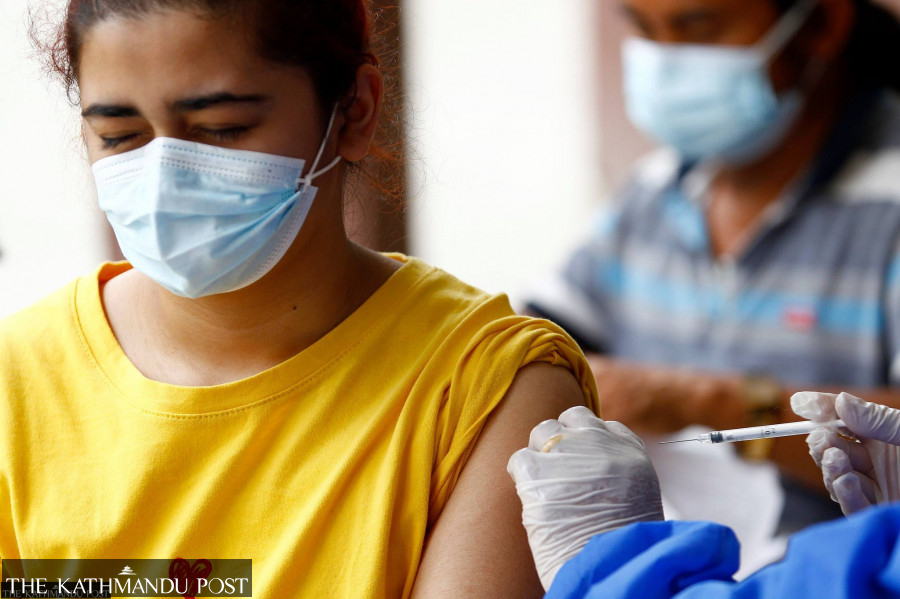
Nepal has started inoculating children between 12 years and 17 years with the Pfizer-BioNTech vaccine and Moderna vaccine. Vaccination of children in 57 districts with the Moderna vaccine is concluding Tuesday and officials say vaccination in 20 districts from Pfizer vaccine will resume soon.
Syringe shortage halts immunisation drive
Vaccination to children between 12 years and 17 years with the Pfizer-BioNTech vaccine has become uncertain, as the Ministry of Health and Population has run out of syringes to administer the jabs.
Health authorities were planning to roll out the jabs immediately in eight districts including the three districts of Kathmandu Valley after the arrival of the jabs on Friday.
Officials say it will take the next couple of days for the diluent substance, which is necessary to mix the vaccine, to arrive.
Threat of the Omicron variant looms
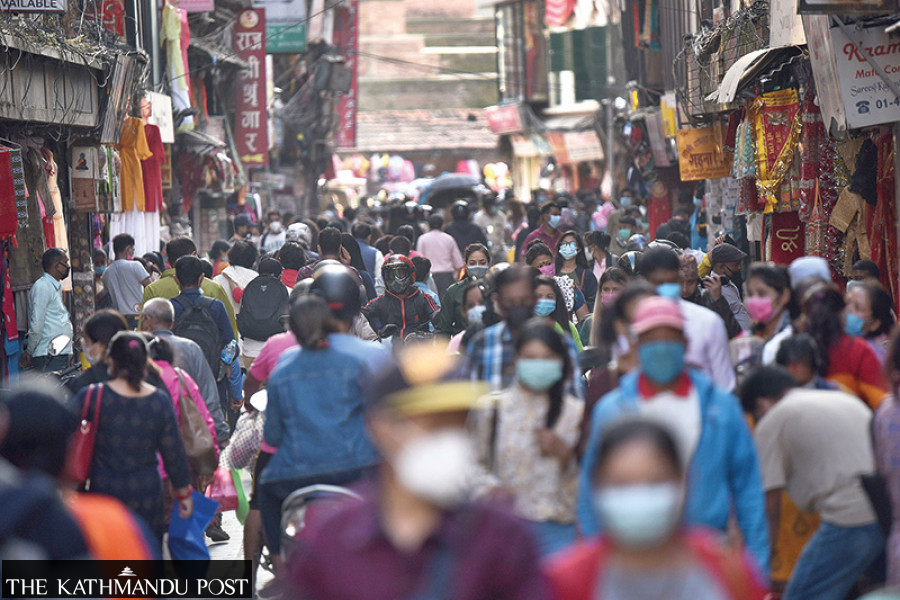
As Omicron, the new variant of the virus, has been spreading rapidly throughout the world, concerns have been growing also in Nepal. And a spike in new cases in neighbouring India has raised alarm bells, as thousands of people cross over to each other’s territories every day.
No measures are in place at the border points, nor have the authorities placed any measures to stop the spread of the virus.
Nepal has already reported at least three cases of Omicron and all are imported infections.
Planning for booster and extended shots
The government is considering providing booster shots once 40 percent of the total population is fully vaccinated. Officials said the country will reach the 40 percent mark in less than two weeks and after that the government will roll out booster doses.
Public health experts have long been stressing the need to ramp up the vaccination drive and launch booster shots, as the coronavirus threat is far from over. The emergence of Omicron, a new variant of the coronavirus, has also become a cause for concern, as it has spread across the world and in neighbouring India.
“Instead of piling up the doses, booster shots should be started,” said Dr Prabhat Adhikari, an infectious disease and critical care expert. “Preventing severity and deaths from the infection depends on how early we start the booster shots.”
Public health experts hopeful about the new year
Despite the growing risk of an outbreak of the Omicron variant, which could spread throughout the country, public health experts say that the nightmare of the second wave of the pandemic will not repeat again.
“Even if Omicron spreads, it will not cause deaths like in the second wave,” said Dr Sher Bahadur Pun, chief of Clinical Research unit at Sukraraj Tropical and Infectious Disease Hospital. “As the vaccination coverage is increasing and even children are getting inoculated, the year 2022 will not be painful like the 2021.”




 18.12°C Kathmandu
18.12°C Kathmandu














